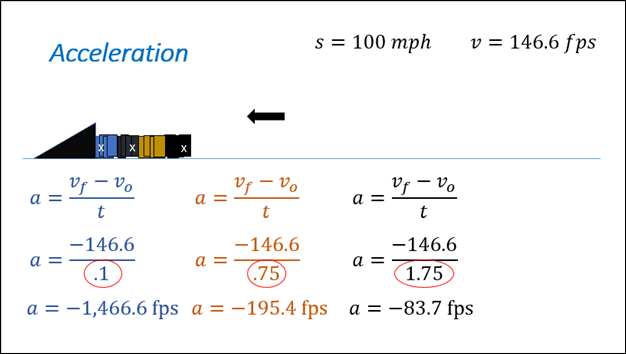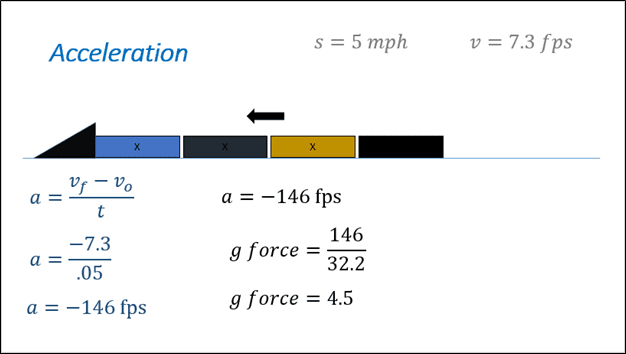There are several reasons engineering and accident reconstruction reports are problematic. Let’s address the biggest and first issue, cost. Many attorneys won’t realize the real value of cases if they deal with doctors who do not know how to document the patient’s injuries correctly, leading to issues related to poor documentation management.
This is a massive benefit to the insurance company who have banked on the sloppiness and ignorance of the entire medical-legal community. However, there is a growing number of doctors and attorneys who do know.
In this sense, the insurance carrier knows they’ll pay, a vast majority of this time, a minimum amount for a collision even if the case needs to have a much greater value due to the nature of the injuries. The insurance companies know this for a number of reasons, but the biggest reason is cost, not for them but you.
Table of Contents
Accident Reports and Insurance Companies
For the sake of discussion let’s say the average case settles for $15,000. If the collision specialist costs $2,000 to $5,000 (along with the doctors and the other experts), this is an expense which cannot or chooses not to be absorbed by solo attorney’s, smaller and even bigger legal firms. This is known by the insurance company and use it whenever it presents itself.
Why can a “deep pocketed” insurance company afford to pay a specialist on a smaller case? There are few reasons but the two are the insurance companies can absorb the expense of the consultants AND a smaller instances will perform the work, as good faith towards the client, pro bono, in some cases.
Obviously, if the attorney cannot make any money they will not take the situation and paying for a collision professional is a substantial factor in this decision, especially if the defense already has you. This greatly reduces the attorney’s costs per case while making you more valuable as a resource AND affords the attorney the chance to take on cases.
Identifying Inaccuracies
The cost concerns cause a second problem, identifying inaccuracies. I have yet to meet an crash engineering defense pro who will explain the shortfall of a case because it is going to expose their inaccuracies and will not bode well for them regarding referrals. MANY low speed collisions have gaps which must be filled in with information that is vetted and carefully selected. Using generalized data (that is the standard in the industry to work with) is quite dangerous as it makes the difference for results reliability too wide. The results will have margin for error and that margin of error is the difference between being or prevailing on the side and all accepted as accurate, but is not.

In this section we discuss why time is a critical element. In the picture above, we illustrate a train, which collides with a barrier at 100 miles per hour and crushes. The related math demonstrates how increasing the time decreases acceleration (see circled numbers). There is not any room for doubt regarding injury as its speed and acceleration is beyond accepted thresholds. What if the speeds change so they are very close to those injury thresholds?

Consider the second example, here the speed of the train represents final approach to a stop hurdle in which the engineer is a little careless and bumps the cease hurdle. What’s important to notice about this visual is the moment. If we double the time (from .05 to .1) the last g force is halved (resulting in 2.267 g’s). What if there were studies that we could cite which say the time necessary to stop for a train is .075 seconds? The first time value of .05 would be too brief, the second value of .1 would be too big, and both do not fit the cited studies.
In this case the period variable changes a tiny amount but the resulting change in the g forces may no longer be sufficient to substantiate a claim for injury. This is the reason the justification for any values is so significant. If you don’t understand they were selected and why the variables are there, they you do not know if they’re accurate or not. A deviation is often the arbiter in determining if there were sufficient transference of forces needed for 27, in a case for failure or success.
Conclusion
Cost and inaccuracies are a couple of the problems commonly faced by attorneys regarding collision reconstruction. For doctors, there’s now a recognized course to offer you the training to be an collision engineer/reconstructionist and for the attorney, when there is a defense engineer, you should have someone dissecting the math to ensure accuracy because usually the “guestimates” used will work against you in settlement or litigation.
The scope of our information is limited to chiropractic and spinal injuries and conditions. To discuss options on the subject matter, please feel free to ask Dr. Jimenez or contact us at 915-850-0900 . 
Additional Topics: Weakened Ligaments After Whiplash
Whiplash is a commonly reported injury after an individual has been involved in an automobile accident. During an auto accident, the sheer force of the impact often causes the head and neck of the victim to jerk abruptly, back-and-forth, causing damage to the complex structures surrounding the cervical spine. Chiropractic care is a safe and effective, alternative treatment option utilized to help decrease the symptoms of whiplash.
.video-container{position: relative; padding-bottom: 63%; padding-top: 35px; height: 0; overflow: hidden;}.video-container iframe{position: absolute; top:0; left: 0; width: 100%; height: 100%; border: none; max-width:100%!important;}

TRENDING TOPIC: EXTRA EXTRA: New PUSH 24/7®? Fitness Center
Post Disclaimer
Professional Scope of Practice *
The information on this blog site is not intended to replace a one-on-one relationship with a qualified healthcare professional or licensed physician and is not medical advice. We encourage you to make healthcare decisions based on your research and partnership with a qualified healthcare professional.
Blog Information & Scope Discussions
Welcome to El Paso's Premier Wellness and Injury Care Clinic & Wellness Blog, where Dr. Alex Jimenez, DC, FNP-C, a board-certified Family Practice Nurse Practitioner (FNP-BC) and Chiropractor (DC), presents insights on how our team is dedicated to holistic healing and personalized care. Our practice aligns with evidence-based treatment protocols inspired by integrative medicine principles, similar to those found on this site and our family practice-based chiromed.com site, focusing on restoring health naturally for patients of all ages.
Our areas of chiropractic practice include Wellness & Nutrition, Chronic Pain, Personal Injury, Auto Accident Care, Work Injuries, Back Injury, Low Back Pain, Neck Pain, Migraine Headaches, Sports Injuries, Severe Sciatica, Scoliosis, Complex Herniated Discs, Fibromyalgia, Chronic Pain, Complex Injuries, Stress Management, Functional Medicine Treatments, and in-scope care protocols.
Our information scope is limited to chiropractic, musculoskeletal, physical medicine, wellness, contributing etiological viscerosomatic disturbances within clinical presentations, associated somato-visceral reflex clinical dynamics, subluxation complexes, sensitive health issues, and functional medicine articles, topics, and discussions.
We provide and present clinical collaboration with specialists from various disciplines. Each specialist is governed by their professional scope of practice and their jurisdiction of licensure. We use functional health & wellness protocols to treat and support care for the injuries or disorders of the musculoskeletal system.
Our videos, posts, topics, subjects, and insights cover clinical matters and issues that relate to and directly or indirectly support our clinical scope of practice.*
Our office has made a reasonable effort to provide supportive citations and has identified relevant research studies that support our posts. We provide copies of supporting research studies available to regulatory boards and the public upon request.
We understand that we cover matters that require an additional explanation of how they may assist in a particular care plan or treatment protocol; therefore, to discuss the subject matter above further, please feel free to ask Dr. Alex Jimenez, DC, APRN, FNP-BC, or contact us at 915-850-0900.
We are here to help you and your family.
Blessings
Dr. Alex Jimenez DC, MSACP, APRN, FNP-BC*, CCST, IFMCP, CFMP, ATN
email: coach@elpasofunctionalmedicine.com
Licensed as a Doctor of Chiropractic (DC) in Texas & New Mexico*
Texas DC License # TX5807
New Mexico DC License # NM-DC2182
Licensed as a Registered Nurse (RN*) in Texas & Multistate
Texas RN License # 1191402
ANCC FNP-BC: Board Certified Nurse Practitioner*
Compact Status: Multi-State License: Authorized to Practice in 40 States*
Graduate with Honors: ICHS: MSN-FNP (Family Nurse Practitioner Program)
Degree Granted. Master's in Family Practice MSN Diploma (Cum Laude)
Dr. Alex Jimenez, DC, APRN, FNP-BC*, CFMP, IFMCP, ATN, CCST
My Digital Business Card


